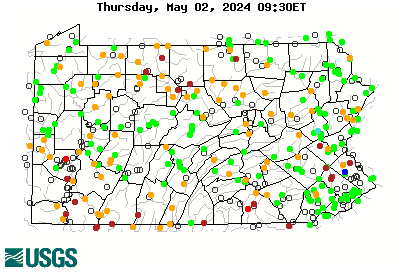GeneBeam
Active member
Maybe you guys should read this:
Strategic Plan for Management of Trout Fisheries in Pennsylvania 2020-2024
Pennsylvania Fish and Boat Commission
Jason Detar, Kris Kuhn, Dave Nihart, Tyler Neimond, Scott Bollinger, Tom Cochran,
Brian McHail, Charles Murray, and Rob Brown
Stocking hatchery Brook Trout into watersheds where wild Brook Trout are present can potentially have a negative impact on wild Brook Trout populations. Potential negative impacts include introgression of hatchery genes into wild trout populations, increased angling mortality of wild Brook Trout, spread of diseases and pathogens, and displacement of wild Brook Trout.
Strategies:
• By 2020, cease distribution of Brook Trout fingerlings to the 22 cooperative nurseries located
in and/or stock fish into watersheds where wild Brook Trout reside.
• Between 2020 and 2022, Area Fisheries Managers will eliminate the stocking of Brook Trout in watersheds where wild Brook Trout reside. Rainbow Trout will primarily be stocked in place of Brook Trout.
• Between 2020 and 2024, the DFM will work with Bureau of Hatcheries to substantially
reduce the production of Brook Trout at all PFBC state fish hatcheries and cooperative
nurseries. Additional Rainbow Trout, golden Rainbow Trout, and/or Brown Trout will be
produced to replace the Brook Trout. No reduction in total number of trout produced at state fish hatcheries is planned.
• Through 2024, as needed, update the trout stocking fact sheet and outreach plan to explain the benefits of reduced Brook Trout production and increased use of Rainbow Trout and/or Brown Trout in the catchable trout program.
Strategic Plan for Management of Trout Fisheries in Pennsylvania 2020-2024
Pennsylvania Fish and Boat Commission
Jason Detar, Kris Kuhn, Dave Nihart, Tyler Neimond, Scott Bollinger, Tom Cochran,
Brian McHail, Charles Murray, and Rob Brown
Stocking hatchery Brook Trout into watersheds where wild Brook Trout are present can potentially have a negative impact on wild Brook Trout populations. Potential negative impacts include introgression of hatchery genes into wild trout populations, increased angling mortality of wild Brook Trout, spread of diseases and pathogens, and displacement of wild Brook Trout.
Strategies:
• By 2020, cease distribution of Brook Trout fingerlings to the 22 cooperative nurseries located
in and/or stock fish into watersheds where wild Brook Trout reside.
• Between 2020 and 2022, Area Fisheries Managers will eliminate the stocking of Brook Trout in watersheds where wild Brook Trout reside. Rainbow Trout will primarily be stocked in place of Brook Trout.
• Between 2020 and 2024, the DFM will work with Bureau of Hatcheries to substantially
reduce the production of Brook Trout at all PFBC state fish hatcheries and cooperative
nurseries. Additional Rainbow Trout, golden Rainbow Trout, and/or Brown Trout will be
produced to replace the Brook Trout. No reduction in total number of trout produced at state fish hatcheries is planned.
• Through 2024, as needed, update the trout stocking fact sheet and outreach plan to explain the benefits of reduced Brook Trout production and increased use of Rainbow Trout and/or Brown Trout in the catchable trout program.





